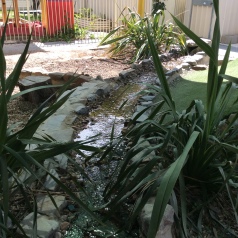Alberton Primary school is situated in Adelaide, South Australia. It is a government funded school with 346 students on role. Alberton is a Category 2 disadvantaged school – although ‘they didn’t want to look or act like one’. We discussed this with Andrew Plastow, The Principal, and he explained that in South Australia schools are ranked out of 7 categories. Schools in category 1 serve the most socio-economically disadvantaged communities, category 7 the least disadvantaged. Alberton students usually leave school achieving on average the same as a category 5 school- this is an incredible progression. The school prides itself as being diverse with a high percentage of students from Aboriginal heritage. The school is made up of ‘The Nest’ (3-6 Year old provision) and ‘The Outer Eggs’ (7-12 Year old ‘Magpie Groups’). The six ‘Magpie Groups’ consist of approximately 45 students (between the ages of 7 and 12) and two teachers per class.
The exceptional provision at Alberton Primary School has rendered us speechless. After we visit a setting we usually sit down and discuss the three main attributes. Alberton’s approach to education is unique and revolutionary and therefore we wanted to delve into this blog post differently. Here is an outline of why we think Alberton is so special:
Ethos and Philosophy
‘Most educators can see that our existing system and approach to education is no longer keeping up with the complex and changing world in which we live. The Alberton Primary School Staff believes we can better prepare our students for their future and have implemented massive organisational and curriculum change to achieve this.’ ‘Taken from The Essence of Alberton booklet‘
The five values that underpin Alberton’s ethos are:
-Discovery
-Success
-Diversity
-Wellbeing
-Belonging
Just like a building, these five values represent the strong foundations that support, scaffold and shelter the people inside. As we have noticed in each of the settings we have written about, providing a safe environment allows imagination and creativity to flourish. At this point in our research a safe environment consists of a place where children have developed trusting relationships with their peers and teachers, are free to follow their curiosities and are able to make mistakes.
We asked a year 6 student what she enjoyed about her school. She replied, ‘we get to learn and we got teachers that care about us and everyone here’. When we observed the children they seemed to have a genuine love for learning, which is a key factor in Alberton’s Progressive Education Philosophy. Talking to Andrew about the free environment Alberton create, we asked how the school meet national requirements such as assessments. He told us that he doesn’t want to think of the children’s progress as a checklist. He referred to our inspiration for this research – Sir Ken Robinson – and his position on the current UK Education system polluted by a factory culture. Because of this, Alberton view children as individuals and not as a ‘finished product’.
Alberton’s ethos redefined our understanding of real-life scenarios for learning. Our previous experience of this went to the extent of the teacher bringing in “real” apples to count with, or writing a letter from a fictional character. In every way Alberton approach learning with a problem-solving attitude. This encourages students to use practical skills to solve real-life problems. The children belong to the scenario and take ownership of the outcome.
 For example, we were told by Andrew that a group of 8-10 year olds were responsible for measuring, designing and the co-construction of their Aboriginal Centre; which has the stunning theme of a gum tree leaf.
For example, we were told by Andrew that a group of 8-10 year olds were responsible for measuring, designing and the co-construction of their Aboriginal Centre; which has the stunning theme of a gum tree leaf.  However, this was not just a one off scenario, as Alberton have a project-based approach to learning which allows mathematical, literary and scientific skills to naturally develop in the project. Another beautiful element of this is that a vast majority of adults that work alongside the students are people of the community. We were particularly impressed by a memorial that was constructed by a local author, demonstrating their love for collaboration and ownership.
However, this was not just a one off scenario, as Alberton have a project-based approach to learning which allows mathematical, literary and scientific skills to naturally develop in the project. Another beautiful element of this is that a vast majority of adults that work alongside the students are people of the community. We were particularly impressed by a memorial that was constructed by a local author, demonstrating their love for collaboration and ownership.
Enabling Environment
The enabling environment at Alberton is second to none. However, we want to stress that this is not solely because of the resources available to the students – which are outstanding – but is because of the foundations that highlight the success of the school. To summarise this, Andrew talked about visiting a setting in Nepal. Whilst there, a teacher explained how they had little resources and that provision in other schools was better. Andrew looked at the cups on the table and gave numerous examples of how they could use cups to cover all subject areas in the curriculum. Therefore portraying that as long as the teacher is able to engage children’s fascinations through any resource, it doesn’t matter what the school’s physical environment is like. This being said, let us now examine how Alberton used their environment to enable children to access learning.
 We began our exploration of the school with ‘The Nest’ which comprises of students aged 3-6. It was refreshing to see the different age groups working alongside one another, which is something we hadn’t experienced in the UK. Their environment consisted of three large open-planned classrooms, a Reggio inspired art studio and an inviting garden. The outside space included heuristic play resources, boats, a mud kitchen that could be accessed at all times, beautiful plants and a sandpit.
We began our exploration of the school with ‘The Nest’ which comprises of students aged 3-6. It was refreshing to see the different age groups working alongside one another, which is something we hadn’t experienced in the UK. Their environment consisted of three large open-planned classrooms, a Reggio inspired art studio and an inviting garden. The outside space included heuristic play resources, boats, a mud kitchen that could be accessed at all times, beautiful plants and a sandpit.
Entering the first classroom we noticed glue guns in the art area – completely unsupervised. We questioned the risk assessment that went into what we would define as ‘high risk tools.’ They told us that the older children usually modelled to the younger children, and therefore they never needed to introduce children to potentially ‘dangerous’ resources. They looked at it from a benefit vs risk viewpoint, in which the benefit of children collaborating outweighed the risk of injury. We felt that this was refreshing as Alberton were valuing children as competent and responsible for their own safety. However, we do understand that teachers are accountable if a child hurts themselves. This has provoked us to assess the way that we approach risk in our teaching practice and is something that we will be exploring in future settings.
children usually modelled to the younger children, and therefore they never needed to introduce children to potentially ‘dangerous’ resources. They looked at it from a benefit vs risk viewpoint, in which the benefit of children collaborating outweighed the risk of injury. We felt that this was refreshing as Alberton were valuing children as competent and responsible for their own safety. However, we do understand that teachers are accountable if a child hurts themselves. This has provoked us to assess the way that we approach risk in our teaching practice and is something that we will be exploring in future settings.
We moved on to the primary school – ages 7-12 – and found that the environment was completely unique to anything we had seen before. They have a range of different learning environments such as floor space, sofas, workbenches, upcycled furniture from the community- no room looks the same. This is a manifestation of Alberton’s philosophy that every child learns differently: every learning space is unique in itself. It made us question why we had institutionalised our classrooms. For example the same chairs, the same tables, the same carpets, the same four walls and a door. Again this relates back to the factory culture of classrooms in the UK. Every classroom in Alberton felt like walking into someone’s home. It was safe and inviting, flowers on every table that engaged more than one sense. We also noticed that the walls are considerably plainer than the classrooms we have experienced in the UK. This made the room feel bigger, spacious, and fresh. We both noted that we would feel free to learn in this room. If we consider Maslow’s theory about the ‘Hierarchy of Needs’ we can see how students at Alberton have their ‘Safety’, ‘Love/Belonging’ and their ‘Esteem’ catered for in this enabling environment – which allows for them to develop their ‘Self-Actualization’ naturally.


Child-led learning
Genuine child-led learning is at the core of why Alberton is such a successful setting. We want to introduce child-led learning with a student’s (year 3) viewpoint of what maths looks like in Alberton. She gave the example that they made hot chocolates, and we responded with mock horror asking what they learn?! All of the children on the table seemed disappointed that we didn’t know it was measuring – which is evidence that Alberton are applying real-life situations to the sometimes daunting maths and literacy. On reflection we also felt that they were teaching what the students wanted, applying the curriculum requirements after.
We agree wholeheartedly with Sir Ken Robinson’s theory of an educational revolution: a revolution based on the interests and passions of the individual child. The highest appraisal of a school must be when you find yourself saying ‘I would send my children there,’ and Alberton is 100% where our children would go. Alberton students are free to select ‘Discovery’ programs of their interests which run Monday-Thursday all afternoon. The students are encouraged to follow their curiosities but also pushed to challenge themselves in selecting a subject they wouldn’t normally opt for. Alberton believe that these ‘Discovery’ lessons develop creativity, innovation, inquiry and problem-solving skills; supporting children to keep taking risks as there are no wrong answers.
As newly qualified teachers, literacy felt like one of the hardest subjects to teach. We found that most children lacked confidence and enjoyment in their writing abilities. Within minutes of walking into Alberton, we were approached by a 5 year 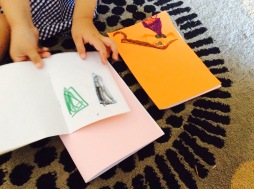 old girl who asked if she could share her story with us. She read us an impressive story and showed us the illustrations to support it. What we found so refreshing is that every child at Alberton is valued as an author, and every child introduces themselves as an author – how incredible! It amazed us to hear that last year a 10 year old from Alberton had successfully published a book. This shows that students at Alberton are given the opportunities to discover their passions throughout their school life.
old girl who asked if she could share her story with us. She read us an impressive story and showed us the illustrations to support it. What we found so refreshing is that every child at Alberton is valued as an author, and every child introduces themselves as an author – how incredible! It amazed us to hear that last year a 10 year old from Alberton had successfully published a book. This shows that students at Alberton are given the opportunities to discover their passions throughout their school life.
‘If you don’t feed the teachers they will eat the children.’ Andrew Plastow
We were intrigued to learn that the teachers at Alberton are encouraged to lead ‘Discovery’ lessons based on their own personal hobbies and interests. As the teachers act as co-constructors in the learning, it enables both student and teacher to further develop their enjoyment in the subject. For example, one teacher with an interest in architecture runs a ‘Deadly Designers’ workshop, where students collaborate on designing school buildings, cosmetics, imaginary worlds and so on. When we walked through the school, the teachers appeared calm and relaxed. We felt that the teachers had a great rapport with the students and value relationships built on mutual respect. It was modelled when we observed the Deadly Designers Discovery session. The teacher encouraged the students not to put their hands up to feedback their opinions. She modelled how to listen attentively to wait for an appropriate time to contribute to the conversation. It was clear that Alberton valued collaboration over a hierarchical system wherby the teacher has control over when the students speak. Yet again they are putting their ‘Essence of Alberton’ into practice and ‘modelling risk-taking, error-making and being human!’.
With the increasing pressure on UK teachers, it can feel like teaching has become a strenuous job and not an enjoyable vocation. As noted in a recent NUT survey, some of these pressures include: unrealistic marking expectations, unnecessary data analysis, preparation for Ofsted, providing evidence performance management purposes, unreasonable lesson planning requirements and too much observation. However, because Alberton empower their teachers through their passions, teaching has become their life in a positive way. This is further evidenced in the nature of Alberton’s staff ro om. They have stripped away the conventional layout, providing a similar space to the classroom environments. The room felt like a safe haven, with photos of family members and positive quotations on the display board. Unlike so many staffrooms across the UK, there are no educational policies, targets, rules, or codes of conduct plastered on the walls; nothing to unnerve or induce stress. The staffroom is what it should be: a place to unwind.
om. They have stripped away the conventional layout, providing a similar space to the classroom environments. The room felt like a safe haven, with photos of family members and positive quotations on the display board. Unlike so many staffrooms across the UK, there are no educational policies, targets, rules, or codes of conduct plastered on the walls; nothing to unnerve or induce stress. The staffroom is what it should be: a place to unwind.
Mixed Age Groups
Prior to our visit to Alberton, whenever we had discussed mixed-aged settings, the common response was, ‘well, how does that work?’. We were very excited to see this in practice, as we haven’t had the opportunity to visit a setting like this before. Alberton believe that the current education system – in which children are grouped by age – does not represent the rest of society and fails to prepare students to work with others who have differing ages and levels of experiences.
After observing this in practice, we were provoked by Sir Ken Robinson’s question about why Education is one of the only social contexts in which children are grouped by age. Like Alberton, we think that by mixing age groups older students naturally ‘bring leadership and mentoring and younger students bring wonderment and enthusiasm’. There are times, however, that students of similar ages will group together (for Maths and Literacy) and times where students with similar interests will work alongside each other in ‘Discovery’ lessons.
Our Final Reflections
Alberton is truly unique. It has challenged all our preconceptions of what education means to us, how it should look and feel. It has revealed that creativity and imagination have no limits. Young people are more than capable of achieving great things: if we allow them to become authors in their own learning journeys. Observing Alberton was not only revolutionary for our own practice, it has made us realise that there needs to be a worldwide change in education. We have been provoked to think of school in relation to society. We teach children about inclusion and equality – however – we fail to model this through our current education system. The rights of the child are at the core of Alberton’s ‘Essence’ and the students and staff are equals. This is shown through the student’s freedom, the mutual respect and the collaborative approach to learning. Students are encouraged to explore projects with the facilitation of teachers. This contrasts with the ‘skill and drill’ approach – trapping children and teachers – so they are unable to explore education in a creative way. Alberton personalise their approach to education, so that every student uses their own interests to develop their knowledge and understanding. We recognise that this approach would not work in every school, however we believe that their holistic view of children – and how they should learn – is of paramount importance.
Therefore, we hope that our insight into Alberton will inspire other teachers and settings to view education from a different lens. We wholeheartedly believe that this could be the start of an educational revolution.
We personally want to thank Andrew Plastow, Marilyn Hayward and all involved with Alberton Primary School for letting us observe your outstanding setting.
If you would like more information about Alberton Primary School click here to visit their website.

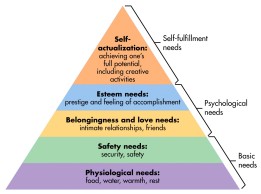














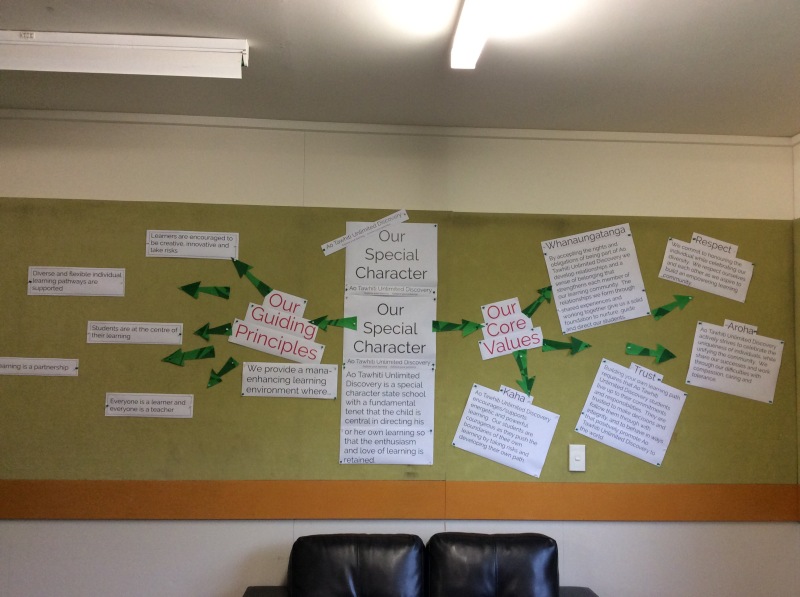





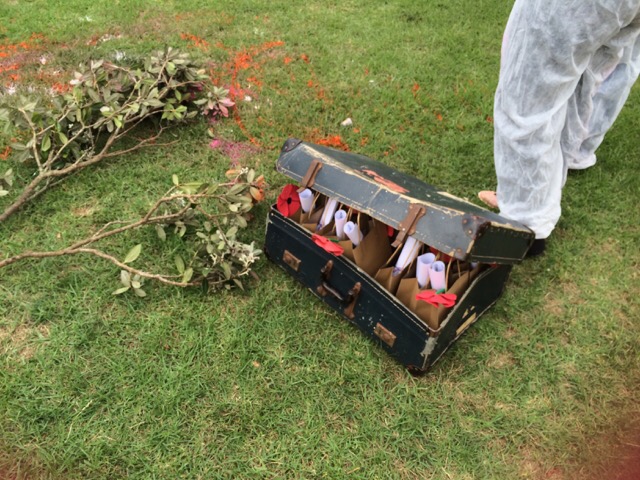









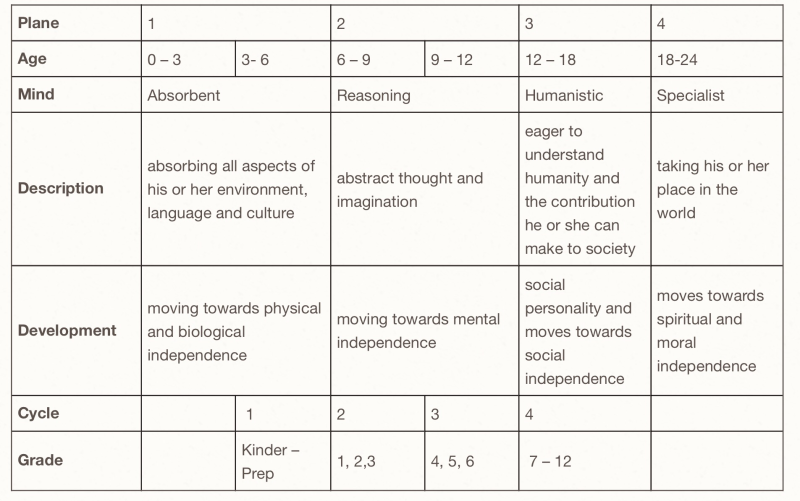













 However, this was not just a one off scenario, as Alberton have a project-based approach to learning which allows mathematical, literary and scientific skills to naturally develop in the project. Another beautiful element of this is that a vast majority of adults that work alongside the students are people of the community. We were particularly impressed by a memorial that was constructed by a local author, demonstrating their love for collaboration and ownership.
However, this was not just a one off scenario, as Alberton have a project-based approach to learning which allows mathematical, literary and scientific skills to naturally develop in the project. Another beautiful element of this is that a vast majority of adults that work alongside the students are people of the community. We were particularly impressed by a memorial that was constructed by a local author, demonstrating their love for collaboration and ownership.










